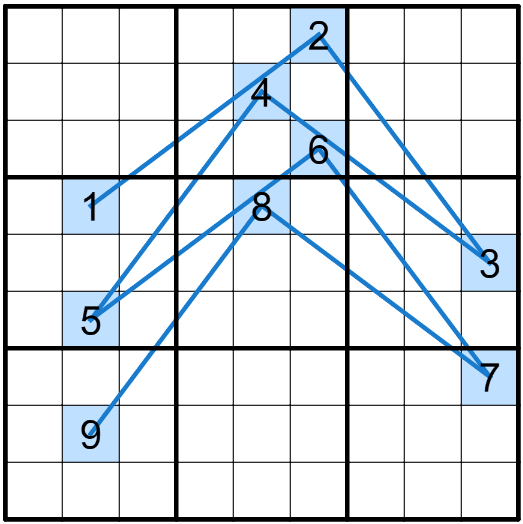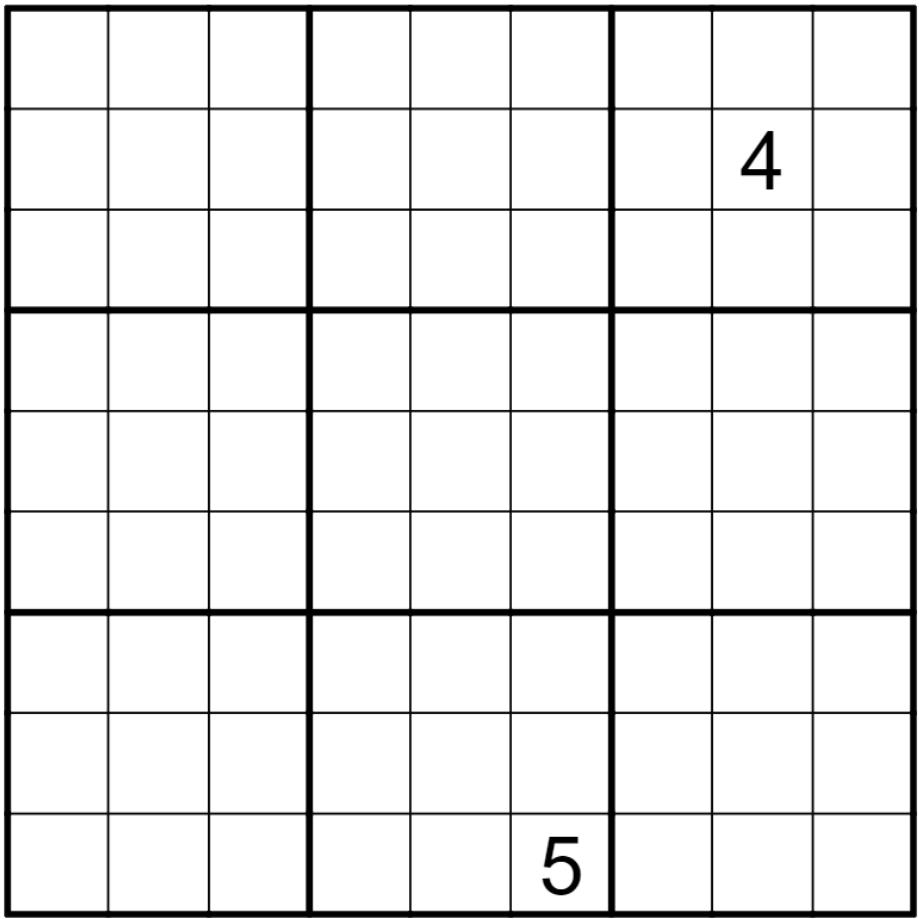Antiknight Antelope Sudoku
(Eingestellt am 31. Mai 2021, 15:32 Uhr von matt383)
Normal sudoku rules apply.
Anti-knight: Identical digits can not be a chess knight's move apart.
Additionally, two fairy chess antelopes are roaming the grid. An antelope is a (3,4) jumper piece similar to the (1,2) jumper standard chess knight, e.g. it moves 3 cells in one direction, then turns 90° and moves 4 cells in one direction.
Antelope Jack starts from a cell containing a 1, then jumps to a 2, 3, etc, visiting cells containing each number from 1 to 8 in ascending order. He then immediately jumps back to the cell he started from, and wanders around the same path forever. If you connect the centers of the cells in Jack's path, you can draw a single closed loop that never touches or crosses itself.
Antelope Jimmy also starts from a cell containing a 1 and jumps around visiting each number from 1 to 8 in ascending order. When he reaches the cell with an 8, he is faced with a decision: he could jump back to his starting cell and continue on his own loop forever like his friend Jack, or he could jump to a new cell containing a 9 and stop there. Whichever he chooses, his path is also a line or loop that never touches or crosses itself.
One of the given numbers must be visited by Jack, the other one must be visited by Jimmy.
An example of a valid uncrossed antelope path (without the 'loop' property):

And here's the puzzle:

I suggest trying this either on paper, or in penpa where you can draw and remove the lines of the antelope paths. Some crossings are hard to visualize if you can't actually draw in the lines.
Try it on F-puzzles or Penpa-edit
Have fun!
Anti-knight: Identical digits can not be a chess knight's move apart.
Additionally, two fairy chess antelopes are roaming the grid. An antelope is a (3,4) jumper piece similar to the (1,2) jumper standard chess knight, e.g. it moves 3 cells in one direction, then turns 90° and moves 4 cells in one direction.
Antelope Jack starts from a cell containing a 1, then jumps to a 2, 3, etc, visiting cells containing each number from 1 to 8 in ascending order. He then immediately jumps back to the cell he started from, and wanders around the same path forever. If you connect the centers of the cells in Jack's path, you can draw a single closed loop that never touches or crosses itself.
Antelope Jimmy also starts from a cell containing a 1 and jumps around visiting each number from 1 to 8 in ascending order. When he reaches the cell with an 8, he is faced with a decision: he could jump back to his starting cell and continue on his own loop forever like his friend Jack, or he could jump to a new cell containing a 9 and stop there. Whichever he chooses, his path is also a line or loop that never touches or crosses itself.
One of the given numbers must be visited by Jack, the other one must be visited by Jimmy.
An example of a valid uncrossed antelope path (without the 'loop' property):
And here's the puzzle:
I suggest trying this either on paper, or in penpa where you can draw and remove the lines of the antelope paths. Some crossings are hard to visualize if you can't actually draw in the lines.
Try it on F-puzzles or Penpa-edit
Have fun!
Lösungscode: Row 9
Gelöst von kkli, gigglingCaduceus, Vebby
Kommentare
am 1. Juni 2021, 07:12 Uhr von kkli
Interesting new rule set. Even after you found Jack and Jimmy, with only 17 digits, it is still a challenging antiknight sudoku. Thanks for the puzzle.




